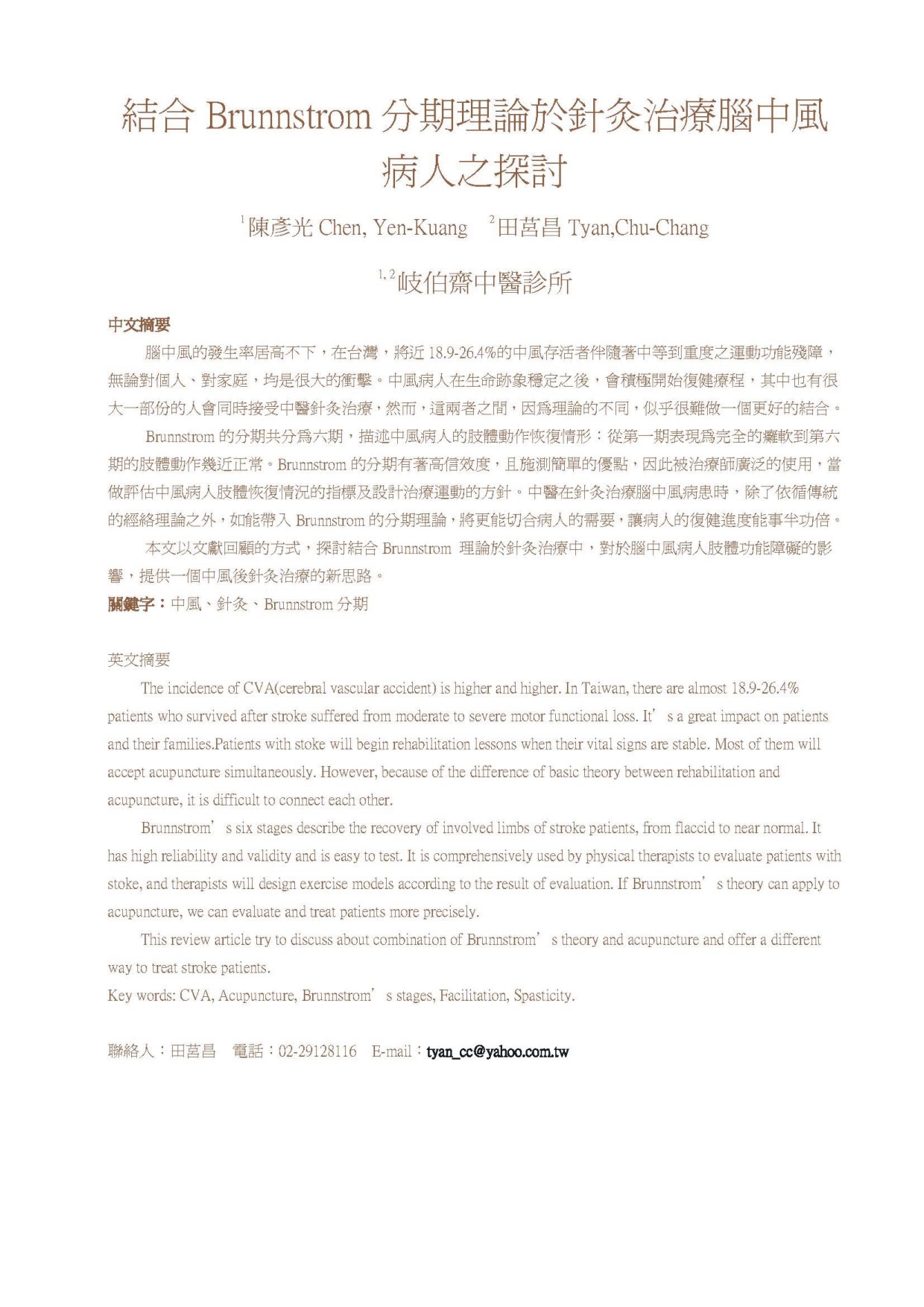結合Brunnstrom分期理論於針灸治療腦中風病人之探討
2011 北台灣中醫醫學雜誌.3卷1期.pp.13 - 25
中文摘要
腦中風的發生率居高不下,在台灣,將近18.9-26.4%的中風存活者伴隨著中等到重度之運動功能殘障,無論對個人、對家庭,均是很大的衝擊。中風病人在生命跡象穩定之後,會積極開始復健療程,其中也有很大一部份的人會同時接受中醫針灸治療,然而,這兩者之間,因為理論的不同,似乎很難做一個更好的結合。Brunnstrom的分期共分為六期,描述中風病人的肢體動作恢復情形:從第一期表現為完全的癱軟到第六期的肢體動作幾近正常。Brunnstrom的分期有著高信效度,且施測簡單的優點,因此被治療師廣泛的使用,當做評估中風病人肢體恢復情況的指標及設計治療運動的方針。中醫在針灸治療腦中風病患時,除了依循傳統的經絡理論之外,如能帶入Brunnstrom的分期理論,將更能切合病人的需要,讓病人的復健進度能事半功倍。本文以文獻回顧的方式,探討結合Brunnstrom理論於針灸治療中,對於腦中風病人肢體功能障礙的影響,提供一個中風後針灸治療的新思路
英文摘要
The incidence of CVA (cerebral vascular accident) is higher and higher. In Taiwan, there are almost 18.9-26.4% patients who survived after stroke suffered from moderate to severe motor functional loss. It's a great impact to patients and their families. Patients with stoke will begin rehabilitation lessons when their vital signs are stable. Most of them will accept acupuncture simultaneously. However, because of the difference of basic theory between rehabilitation and acupuncture, it is difficult to communicate between each other clinically.Brunnstrom's six stages describe the recovery progression of inflicted limbs movement of stroke patients, from total paralysis at stage 1 to near normal at stage 6. It has high reliability and validity and is easy to be tested. It is comprehensively used by physical therapists to evaluate patients with stoke, and therapists will design exercise models according to the result of evaluation. Except from following traditional Chinese medical theory of meridians in applying acupuncture to treat stroke patients, Brunnstrom's staging theory can be applied to acupuncture; then we can fit patients' clinical needs and let the progression of rehabilitation yield twice the result with half the effort. Our article adopts a method of literature review to discuss the influence of applying the evaluation of Brunnstrom's staging theory in acupuncture to the therapeutic effect of limb dysfunction of stroke patients, and provide a novel thinking method toward the treatment of poststroke patients by acupuncture.
